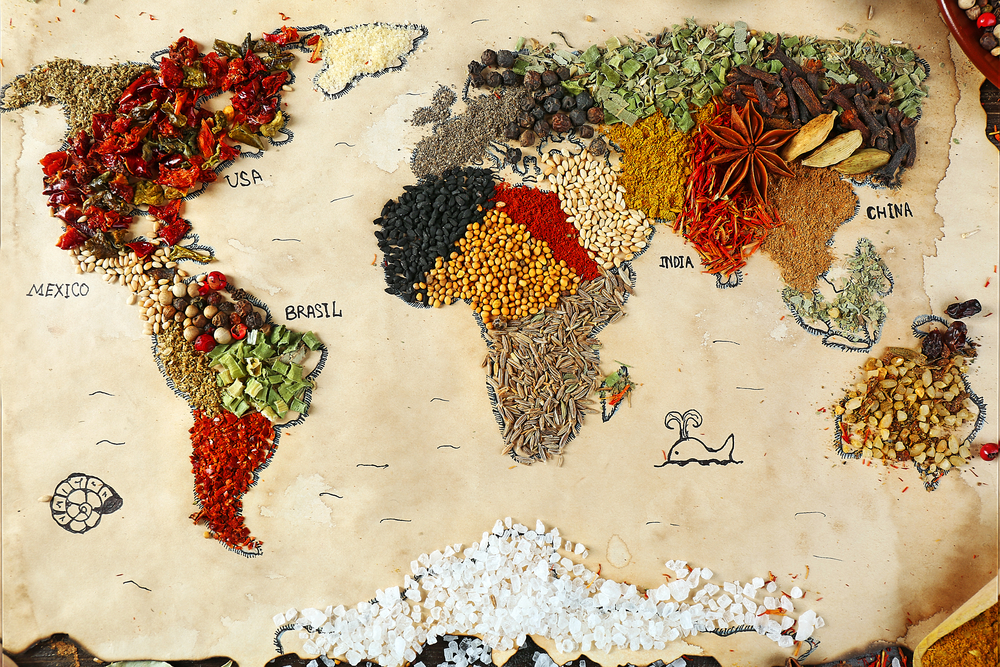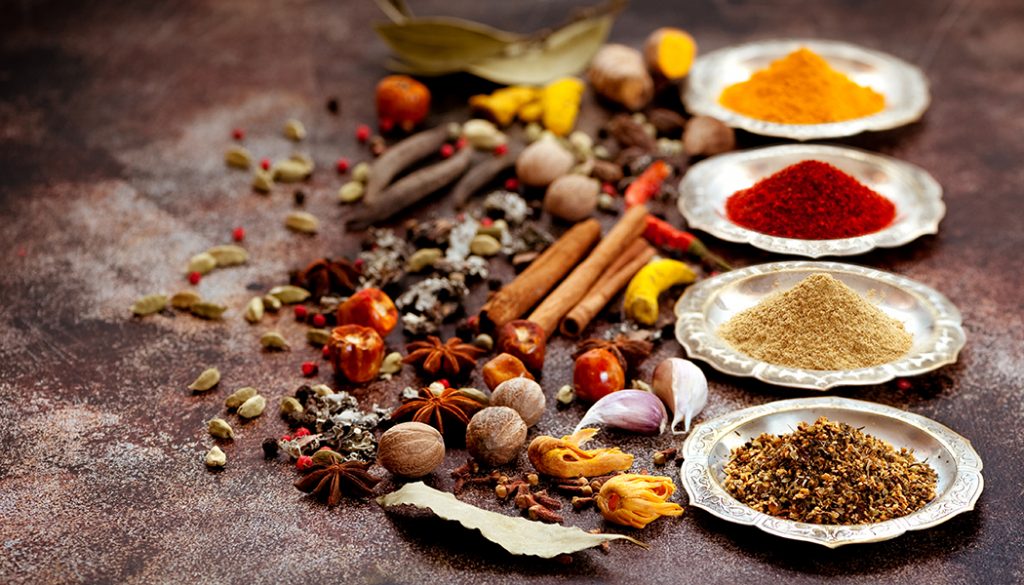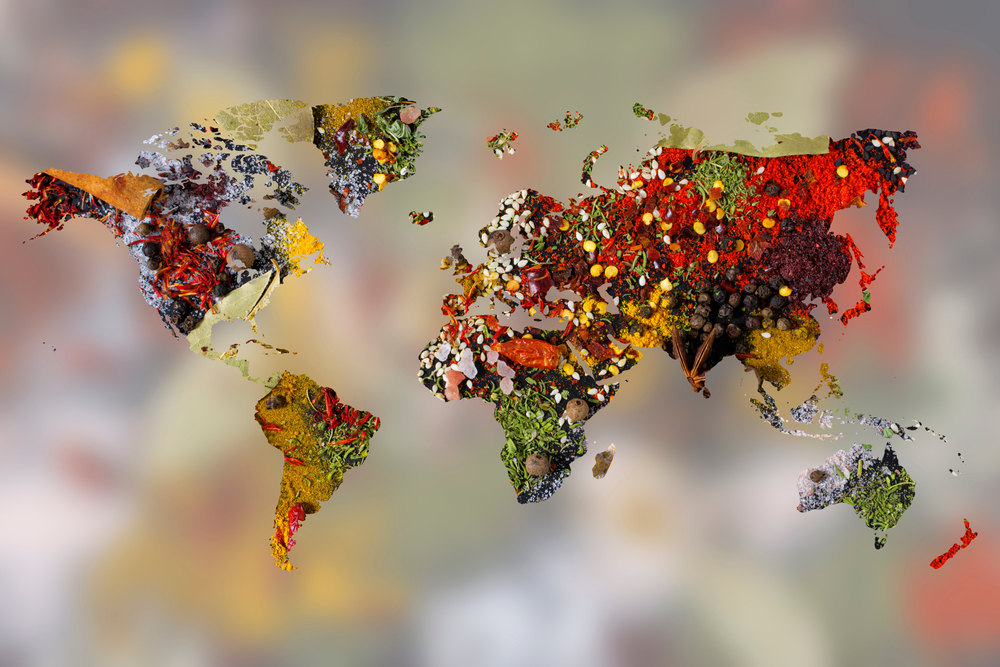For centuries, spices have been some of the world’s most coveted goods, valued not only for their flavor and aroma but also for their medicinal properties, cultural significance, and status. The journey of spices from the East to the West transformed economies, shaped nations, and brought about an age of exploration that would connect the world in ways previously unimaginable. This passage, often perilous and expensive, traces back to ancient times when the world’s most prized commodities traveled from Asia to Europe, becoming the lifeblood of many empires and the spark for global trade.

The Origins of the Spice Trade in Ancient Civilizations
The origins of the spice trade can be traced back more than 4,000 years to ancient civilizations in Asia, particularly in India, Sri Lanka, China, and the islands of Indonesia, which were rich in exotic spices like black pepper, cinnamon, cloves, and cardamom. In these regions, spices were not only used in cooking but also in religious rituals and medicine. Over time, knowledge of these valuable plants and their cultivation spread to neighboring regions.
As early as 2000 BCE, Egyptian pharaohs sought spices such as myrrh, cinnamon, and frankincense, which were imported from Asia for embalming and ceremonial purposes. The Silk Road, a network of trade routes stretching from China to the Mediterranean, played a significant role in facilitating the movement of goods, including spices. Traders carried spices overland across deserts and mountains, often passing through the hands of various middlemen who further increased the value of these coveted items.
The Role of Arab Merchants and the Monopoly on Spices
During the medieval period, Arab merchants emerged as key figures in the spice trade. With their navigational skills and knowledge of overland routes, they managed to establish a monopoly on the spice trade routes between Asia and Europe. Arab traders guarded the origins of spices carefully, weaving mysterious tales about their exotic origins, such as pepper being guarded by poisonous serpents in the jungles of India or cinnamon growing on trees in inaccessible locations. These tales heightened European fascination with spices and helped maintain the high prices set by the Arab traders.
Europe’s Thirst for Spices
By the Middle Ages, spices were in high demand throughout Europe. They were used to flavor and preserve food, cover the taste of spoiled meat, and were believed to hold medicinal properties. Pepper, for instance, became so valuable that it was used as currency and a symbol of wealth. Spices were associated with luxury, and only the wealthy elite could afford them.
As a result of their high demand, European merchants were eager to secure a direct trade route to the East, hoping to bypass the Arab middlemen and reduce costs. This longing for spices drove European exploration, ushering in what is known as the Age of Exploration.
The Age of Exploration and the Race to the Spice Islands
In the 15th century, European explorers set sail in search of a direct route to Asia. Portugal and Spain led the way, with explorers like Vasco da Gama, who in 1498 succeeded in finding a sea route to India. His successful voyage marked the beginning of a new era in the spice trade, as Portugal established a monopoly over the lucrative trade by controlling key ports along the Indian Ocean.

This control, however, did not last long. Other European powers, including the Dutch and the British, were determined to break Portugal’s hold on the trade. The Dutch East India Company and the British East India Company were formed, both seeking to dominate the spice trade. By the 17th century, the Dutch had gained control over the Spice Islands (now part of Indonesia), particularly the Banda Islands, which were the primary source of nutmeg and mace. Through both trade and colonization, they controlled supply and prices, making the Dutch East India Company one of the most powerful and profitable corporations in history.
Spices and the Rise of Colonial Empires
The race for control of the spice trade and its incredible profits motivated European powers to establish colonial empires in Asia, Africa, and the Americas. The Portuguese, Dutch, and British empires each fought fiercely to secure trade routes and territories, leading to battles and alliances with local rulers in Asia. Colonies were established, and indigenous populations were often exploited to produce spices in large quantities for export to Europe.
Over time, the spice trade altered the economies and societies of the East, bringing both wealth and hardship to the people involved in its production and transportation. The pursuit of spices was directly responsible for the development of colonial empires and created lasting legacies of cultural exchange and economic interdependence between East and West.
The Decline of the Spice Trade Monopoly
The monopoly on spices gradually diminished as European colonists introduced spices to their own colonies in tropical climates. For example, British and Dutch colonists introduced spices like cinnamon and nutmeg to the Caribbean and South America. This shift allowed for spices to be grown outside their native regions, reducing the control of Asian producers and enabling the price of spices to drop over time. Advances in agriculture, transportation, and technology further democratized access to spices, making them available to people from all walks of life.
The Modern Legacy of the Spice Trade

Today, spices are a staple in kitchens worldwide, accessible to nearly everyone, and traded globally without the risks and hardships of ancient times. While the journey of spices may no longer drive empires or launch ships, the legacy of their trade remains. The diffusion of flavors and culinary practices across cultures and continents would not have been possible without the spice trade.
In modern times, spices like turmeric, cinnamon, and ginger are recognized not only for their culinary contributions but also for their health benefits, supported by scientific research. In addition, the cultural influence of the spice trade can still be seen in the fusion cuisines that emerged from centuries of trade, colonization, and migration.
Conclusion
The journey of spices from East to West tells a story of adventure, ambition, and interconnectedness. Spices have traveled across oceans and deserts, fueled wars and alliances, and sparked exploration and empire-building. The spice trade was a transformative force in world history, one that created connections that remain strong today. From the markets of ancient Egypt to the bustling ports of Europe, spices have transcended borders and cultures, shaping the world as we know it and adding a richness to human life that goes far beyond flavor.
